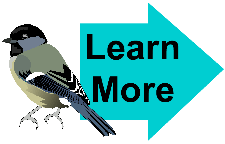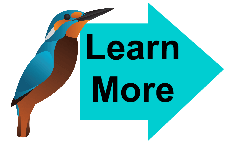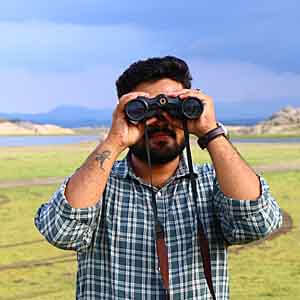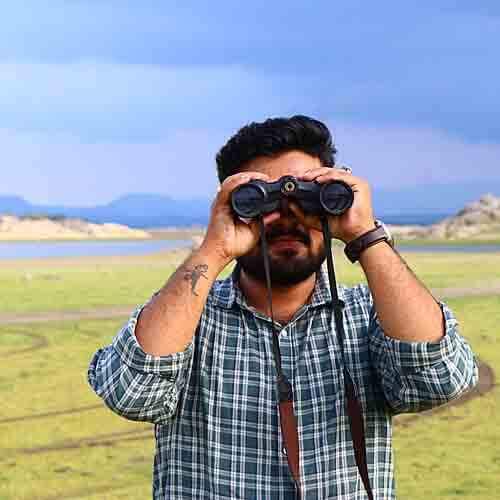Life Cycle Of A Bird
The 7 Fascinating Stages From Egg To Adult...
The life of all species on this planet has a cycle, from laying the offspring to being an adult. Birds also have a life cycle, taking an average of 36 days to become an adult. But you may ask what the life cycle of a bird is.
The life cycle of a bird has seven stages: the egg stage, hatchling stage, nestling stage, fledgling stage, juvenile stage, sub-adult stage, and adult stage. Once birds reach the adult stage—they are ready to start the cycle again by mating and laying eggs.
This article will discuss the life cycle of a bird from egg to adult. It will also delve into specific details about each stage. If you want to learn more, keep reading.

1. Egg Stage
The life cycle of a bird starts with sexual reproduction between a male and a female bird. Once the mating has occurred, the female bird will start laying its eggs. Some birds only produce a single egg after reproduction, while others produce many eggs.
Most adult birds will form nests as the female bird lays eggs. Birds could make it from different materials, such as branches, twigs, moss, fur, or spit. Birds can also build their nests using artificial materials such as paper or plastic. Some birds dig the ground where they can place their eggs.
The female bird usually protects and provides warmth to these eggs. However, there are bird species, like the whooping crane, where both the male and female bird defend their eggs. This period, called incubation, varies from one bird species to another. The incubation for most bird eggs may take more than a week; others could take months.
The egg is composed of egg white, egg yolk, and a minute cell that is the embryo that will develop into a bird. You will find an air sac inside the egg that will provide oxygen to the developing embryo.
The egg white provides calcium that helps develop the bird’s bone structure. The egg yolk provides the food and protein for the embryo, and when the embryo develops its lungs—the air sac forms in the egg.
The chick will develop an egg tooth from its beak. This egg tooth will eventually help the chick break the shell and get out of it. It will disappear after a few days.
Once the embryo is ready to leave the egg, it will position itself and start hatching. It may take hours or days for them to break the eggshell, and the process could be exhausting for the chick.
Chicks tend to lie still for a few hours to recover, and their parents do not need to feed them yet at this stage.
Interesting fact: Ostriches—the most sizeable bird species in the world—produce the biggest eggs laid by bird species. Other bird species that lay large eggs include the:
- Emu
- Cassowary
- Trumpeter swan
- Kiwi
What To Do if You Found a Bird’s Nest With Eggs Without Their Parents
Several US states and other countries have laws that protect specific bird species and their offspring from being touched or possessed by humans. You may check your local regulations first to see if handling a bird’s nest with eggs is okay.
More often than not, the parents of the eggs do not abandon their eggs, and they will return to the nest as soon as a predator has gone away. It would be best to leave the nest alone and allow the bird’s parents to return to their chicks.
You can also call your local animal welfare center or wildlife rescue so they can take the eggs properly.

Here's additional articles of ours about bird eggs...
- What's Inside A Birds Egg?
- Fun Facts About Bird Eggs
- Can Birds Lay Eggs Without A Male?
2. Hatchling Stage
The next stage in a bird’s life cycle is the hatchling stage. This stage happens as soon as they emerge from their eggshell and are strong enough to survive outside. While they can survive outside, they still need their parents to provide warmth as they cannot control their body temperature.
Some hatchlings are naked with featherless skin as their feathers start to develop. Others have feathers as soon as they hatch. They are blind as they haven’t yet opened their eyes—and cannot move around or fly. They can only lift their head for feeding purposes, and they need their parents to feed them inside their nests.
Chicks are also vulnerable to predators at this stage as they call for their parents for food and cannot move to protect themselves. Their parents are also vulnerable to predators as they search for their chick’s food.
Most hatchlings feel their mother is around to give them food. However, some birds can be relatively mature after hatching from the egg. These birds can feed themselves and immediately leave the nest.
3. Nestling Stage
Birds that are a few days old will soon enter the nestling stage. The birds in this stage have small and soft feathers that can protect them from the cold. Their eyes have also opened, and they will be able to stand on their feet. The chicks will also be able to produce their heat.
Birds in this stage will remain in the nest and still need their parents for feeding and survival.
Nestling birds will develop a tube where the wings will grow. They still cannot fly at this stage as the wings as they haven’t developed their wings sufficiently—but they will practice flapping in readiness for the next phase of their development.

Here's additional articles of ours which further discuss this nesting phase...
- How Long Do Baby Birds Stay In The Nest?
- Bird Nest Facts
- Do Birds Abandon Their Babies?
4. Fledgling Stage
The next stage in the life cycle of a bird is the fledgling stage. This period again varies from one bird species to another. Birds in this stage have grown feathers and wing muscles, but they are shorter than adult birds.
They are curious and now start to explore outside of their nests. Chicks will begin to vocalize even more at this stage. However, they are still under the care of their parents.
These tiny birds will practice how to fly at short distances or hop about on the ground to prepare themselves for flight. Some fledgling birds can learn how to fly faster than others.
5. Juvenile Stage
The juvenile stage in the bird’s life cycle is akin to teenage life in humans. For most birds, the time spent at this stage is shorter.
Some birds reaching this stage will have mastered flying and feeding themselves. They will leave their nests for the last time and start living independently. They may look like mature birds, but they have duller features and less defined markings compared to them. Juvenile birds also experience their first plumage at this stage.

Now that the bird is ready to leave the nest, exactly how is it that they learn to fly? Is it instinctual? Maybe a push from mom? We discuss this in our article about How Birds Learn To Fly.
7. Adult Stage Of The Life Cycle Of A Bird
Birds reaching the adult stage are now capable of mating with other birds. Their appearance depends on the season where you locate them—as many of them migrate to a warmer climate.
Birds in this stage also search for their territory where they can find nourishment and protection from potential predators.
Adult male birds look their best and put their best foot forward to attract potential female mates for sexual reproduction. This display is done by showing bright feathers, singing, showcasing their nest-building capabilities, and bringing food to their prospective mate.
Once mating has occurred, the life cycle of a bird begins again as soon as the female bird starts laying eggs.
Back To The TOP Of This
Life Cycle Of A Bird Page

About the Author...
Richard Worden, a dedicated bird lover for over 20 years, I love to share my in-depth knowledge and passion for birds. Read more About Me and my expertise in this field.
- We Know Birds HOME ›
- Bird Facts and Information ›
- Life Cycle Of A Bird
